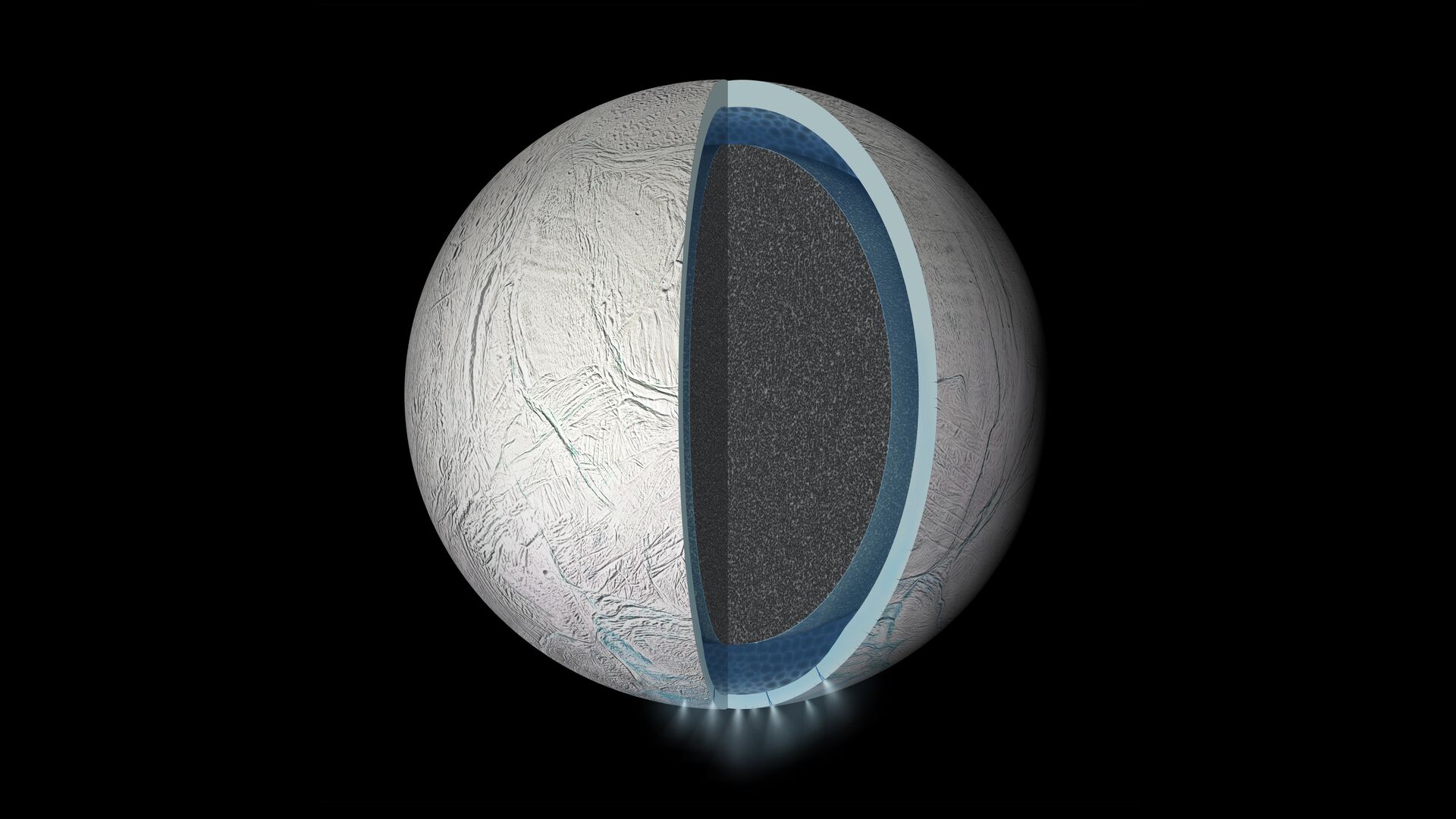https://sputnikglobe.com/20230104/scientists-reveal-how-life-could-be-detected-on-enceladus-saturns-moon-1106031379.html
Scientists Reveal How Life Could Be Detected on Enceladus, Saturn's Moon
Scientists Reveal How Life Could Be Detected on Enceladus, Saturn's Moon
Sputnik International
Scientists have proposed a new way to detect life on Enceladus, one of Saturn's satellites. Scientists have been intrigued by this question since the Voyager era.
2023-01-04T12:08+0000
2023-01-04T12:08+0000
2023-01-04T12:08+0000
science & tech
jupiter
enceladus
extraterrestial life
spacecraft
mission
https://cdn1.img.sputnikglobe.com/img/105270/72/1052707274_1:0:8534:4800_1920x0_80_0_0_78322bb2243d43ecf7537d00064bc3ab.jpg
A team of researchers from the University of Arizona believes that an orbiting space probe could help to find out whether there is microbial life on Saturn's moon Enceladus. In their paper, the researchers, who simulated such a mission, described how an orbiting spacecraft probe could solve the mystery of whether microbes inhabit Enceladus' subsurface ocean. The scientists designed missions that would use upgraded instruments to sample plumes or even land on the surface of Saturn's moon.The research team modeled its calculations based on the hypothesis that Enceladus has methanogens, microbes that can live in oceanic hydrothermal vents similar to those on Earth. The researchers calculated what the total mass of methanogens on Enceladus would be, as well as the probability that their cells and other organic molecules could be ejected through the plumes.The paper includes recommendations on the minimum amount of material to be collected from the plumes to search for both microbial cells and certain organic molecules.Enceladus was first surveyed in 1980 by NASA's Voyager 1 spacecraft. Later, between 2005 and 2017, NASA's Cassini probe flew around the Saturn system and studied its complex rings and satellites. Scientists were stunned when Cassini discovered that beneath Enceladus' thick layer of ice lurks a warm, salty ocean of methane-emitting water.The discovery of complex organic macromolecules in samples collected by Cassini from Enceladus' jet plume on June 27, 2018 fueled discussions about the possibility of life there.
Sputnik International
feedback@sputniknews.com
+74956456601
MIA „Rossiya Segodnya“
2023
News
en_EN
Sputnik International
feedback@sputniknews.com
+74956456601
MIA „Rossiya Segodnya“
Sputnik International
feedback@sputniknews.com
+74956456601
MIA „Rossiya Segodnya“
life on enceladus, saturn's enceladus is there life on it, enceladus mission, spacecraft to enceladus, scientists offer theory how detects life on enceladus
life on enceladus, saturn's enceladus is there life on it, enceladus mission, spacecraft to enceladus, scientists offer theory how detects life on enceladus
Scientists Reveal How Life Could Be Detected on Enceladus, Saturn's Moon
Life on Enceladus, Saturn's sixth-largest satellite, is a topic of scientific debate, with many researchers saying that despite its small size and the fact that it is covered in a thick shell of ice, it could be a habitable world.
A team of researchers from the University of Arizona believes that an orbiting space probe could help to find out whether there is microbial life on Saturn's moon Enceladus.
In their paper, the researchers, who
simulated such a mission, described how an orbiting spacecraft probe could solve the mystery of whether microbes inhabit Enceladus' subsurface ocean. The scientists designed missions that would use upgraded instruments to sample plumes or even land on the surface of Saturn's moon.
"By simulating the data that a more prepared and advanced orbiting spacecraft would gather from just the plumes alone, our team has now shown that this approach would be enough to confidently determine whether or not there is life within Enceladus' ocean without actually having to probe the depths of the moon. This is a thrilling perspective."
Régis Ferrière
Associate professor in the UA Department of Ecology and Evolutionary Biology
The research team modeled its calculations based on the hypothesis that Enceladus has methanogens, microbes that can live in oceanic hydrothermal vents similar to those on Earth. The researchers calculated what the total mass of methanogens on Enceladus would be, as well as the probability that their cells and other organic molecules could be ejected through the plumes.
"We were surprised to find that the hypothetical abundance of cells would only amount to the biomass of one single whale in Enceladus' global ocean," said the paper's author, evolutionary biologist Antonin Affholder. "Enceladus' biosphere may be very sparse. And yet our models indicate that it would be productive enough to feed the plumes with just enough organic molecules or cells to be picked up by instruments onboard a future spacecraft."
The paper includes recommendations on the minimum amount of material to be collected from the plumes to search for both microbial cells and certain organic molecules.
Enceladus was first surveyed in 1980 by NASA's Voyager 1 spacecraft. Later, between 2005 and 2017, NASA's Cassini probe flew around the Saturn system and studied its complex rings and satellites. Scientists were stunned when Cassini discovered that beneath Enceladus' thick layer of ice lurks a warm, salty ocean of methane-emitting water.
The discovery of complex organic macromolecules in samples collected by Cassini from Enceladus' jet plume on June 27, 2018 fueled discussions about the possibility of life there.

